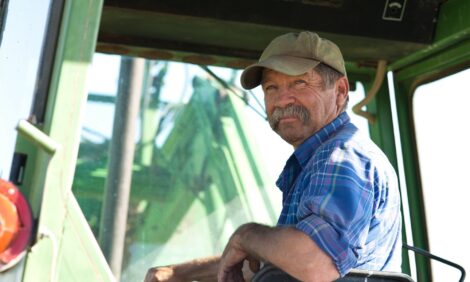



Farmers boost efficiencies by embracing data collection in grassland and manure management
UK farmers are taking an increasingly measured approach to their grassland and manure management, helping drive down costs and boost efficiencies.A new survey carried out by the organisers of the Grassland & Muck Event – the third such survey since 2011 – has revealed that more farmers are analysing inputs and outputs, enabling them to better target management decisions.
“It’s wonderful to have been able to gather this information over several years, giving a really strong snapshot of the direction in which the industry is moving,” says event organiser Alice Bell. “Although we sadly had to cancel this year’s event due to the Covid-19 outbreak, we thought it was important to publish the results of the survey so that farmers and their advisers can identify trends and opportunities for greater efficiencies.”
Based on 224 responses from around the UK, more people are testing their soil, and they are testing it more regularly, with 68 percent testing it every five years or less versus 62 percent in 2017 and 57 percent in 2011.
“This is good news as measuring your soil nutrient status helps you manage nutrients more effectively,” says Paul Newell Price, principal soil scientist at ADAS. “If you’re applying fertiliser or manure, soil testing and liming to optimum soil pH helps you use these materials more efficiently.”
Over a third dig soil pits to analyse soil structure – compared to a quarter in 2017. “Following the wet winter, many soils may be compacted or poached, so where you think there may be a problem, it’s important to check the sward and dig a hole to identify what action – if any – is required.”
Farmers are applying lime more regularly, too, with 56 percent applying it every five years or less compared to 49 percent in the last survey. “When you look at individual responses, there is good understanding driving these decisions,” says Yara agronomist Philip Cosgrave. “Farmers are aware of the acidifying effect that this year’s high rainfall will have on pH, and are basing applications on soil tests.”
There has been a continued shift to more accurate testing of manure nutrient content: 18 percent used laboratory analysis against 14 percent in 2017 and just 9 percent in 2011. “That is good to see – there is huge variation in organic manures,” says Mr Cosgrave.
As a result of this more technical approach, farmers have further reduced fertiliser use; 32 percent used less nitrogen fertiliser in 2020. Just over a quarter reduced phosphate use and 22 percent cut potash applications. In contrast, 40 percent of respondents increased sulphur use, which is not a surprise, says Mr Cosgrave. “Farmers are much more aware of sulphur requirements – it’s up there with NP&K now.”
When it comes to grass management, 54 percent measure their grass – mostly using a plate meter – up from just 30 percent in 2017. Reseeding levels have remained fairly steady over the past three years, with 79 percent reseeding leys every one to six years – and most reseeding is influenced by poor yield and weeds. “I’m not surprised by that – forage is the cheapest source of animal feed and farmers are trying to maximise it,” says Mr Cosgrave.
“It is clear to see that farmers are focusing on producing better quality silage and grazing to produce more milk or meat from grass,” he adds. “If you measure nutrients and how much grass you’re growing you can start making changes and see whether you’re making progress. It all feeds back to better environmental impacts and lower costs of production.”


